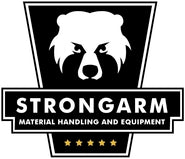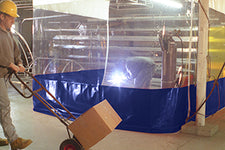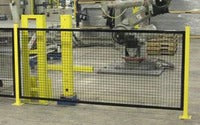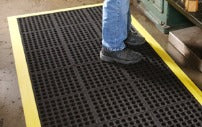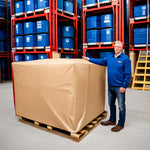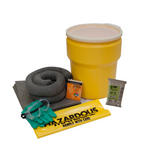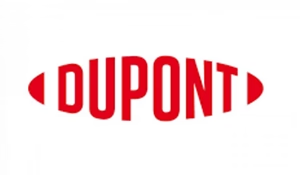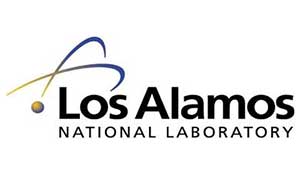Spill containment products are a crucial investment for businesses dealing with liquid chemicals, oils, and other hazardous substances. However, it doesn’t make sense to select just any spill containment item to avoid chemical spills. From mini spill trays to spill decks to eight-drum spill pallets, there’s a myriad of options available on the market.
Selecting an incorrect spill containment product increases the chances of frequent spill incidents. This might further lead to an increase in cleanup and maintenance costs. Eventually, you might end up reinvesting in a new spill containment product. Therefore, it’s wise to identify your business requirements, and then, purchase a spill container that lasts for years.
Wondering how to conduct a detailed analysis before buying the best spill containment equipment for your business?
Let’s dig deeper into selecting the right option to achieve operational efficiency of your business:
Explore the safety regulations of your specific industry
Safety laws and regulations about spill containment differ from one industry to the other. However, complying with industry-specific regulations enables businesses to act proactively. Choosing spill containment solutions according to legal requirements can also help them avoid any fines.
OSHA provides detailed compliance guidelines about spill containment to eliminate the potential risks affecting workers’ safety. That’s especially true for specific industries (including oil and gas, food processing, and pharmaceuticals) where direct handling of chemicals is required. Therefore, it’s wise to look for user-friendly spill containment materials that ensure no spillage during the chemical-handling process.
Businesses frequently dealing with combustible liquids should practice high caution. The construction industry, for instance, deals with flammable materials such as paint and solvents. Another example is that of the aviation industry dealing with jet fuel and hydraulic fluids – the leakage could have disastrous consequences. So, you can look for fire-resistant spill containers if your business belongs to any such industry whenever fire prevention is a priority.
Identify the liquid type
The quality of spill containment products depends on the type of liquids a business owner plans to store. For containing hazardous liquids (including acids, solvents, and chemicals), it’s important to choose a containment solution that’s resistant to chemical breakdown. That’s how it is going to last for a longer time. For non-hazardous liquids, general-purpose spill containers will do well.
The thickness of the liquid also plays a significant role. Thick liquids (such as oil) should be stored differently than chemical or water solvents. For storing such liquids, choose spill containers made of polyethylene (as it doesn’t degrade or corrode when it is in constant contact with thick liquids or oils). You can also choose spill containment products made of PVC because of its cost-effectiveness.

Consider the capacity of the spill container
Since the need for spill containment differs from one industry to the other, it’s important to choose a spill container that suits your business requirements. Spill containment products vary in terms of their capacity to dispense specific liquids. Therefore, it’s crucial to understand each spill containment unit in detail before going further. Match the capacity of the following spill containers and choose one according to your needs:
Plastic lab trays
These corrosion-resistant trays are ideal for laboratories and other businesses that need to dispense a small quantity of liquids or chemicals. They help prevent contamination by catching small drips or spills from bottles or other small containers.
In pharmaceutical companies, plastic lab trays contain spills from reagents. Scientific researchers use them while managing samples. Students use these in chemistry labs while handling chemicals. If your business belongs to any such industry, you can choose plastic lab trays to avoid any chemical leakage.

Spill trays
These trays are designed to hold minor spills and leaks from small drums. Having lower capacity, they can contain a few gallons of liquids. Thus, they are a great spill containment option for businesses that need a containment solution to handle smaller volumes of liquids.
If you have limited space to store a few drums of liquid, a two-drum spill tray will do the job. But if you have a bit more space with a higher quantity of chemicals to dispense, you should go for a four-drum spill tray.
Spill deck
Spill decks contain higher volumes of liquids or chemicals as compared to spill trays. Thus, they are used for the containment of slightly larger spills. Still, they are available in various sizes according to the required capacity. Small decks usually contain liquid having the quantity of ten to twenty gallons. If your business requires containing a similar volume of liquid, you can go for a one-drum spill deck.
Medium-sized spill decks can accommodate twenty-five to forty gallons of liquid. They are suitable for containing three to four drums. A four-drum spill deck will suffice if your business requirements match the capacity of a medium-sized spill deck. Large-sized spill decks are another option. Designed for larger containment, these spill decks allow you to store fifty to sixty gallons of liquid on them.
Whichever size you choose, look for modular ones so that it becomes easier for workers to link the spill decks together.
Spill pallet
Made from polyethylene, a spill pallet can store hazardous liquids in bulk. Its durable design and higher capacity make it a feasible option for large-scale operations. If your business belongs to industries such as oil and gas or chemical manufacturing, you should prefer spill pallets to fulfill larger containment needs.
A two-drum spill pallet holds liquid having a capacity of around forty to sixty gallons. But if your business handles an extensive quantity of liquids (with a higher storage frequency), you can even go for an eight-drum spill pallet as it can store more than a hundred gallons of liquid.
Whichever option you want to choose, look for a spill pallet with a removable grate as it ensures easy cleaning. Also, make sure the product aligns well with the oil spill safety regulations.
Spill berm
While spill pallets are permanent setups and do not require frequent mobility, spill berms are portable spill containers. This temporary leak prevention option is ideal for businesses that might need a spill containment product only in an emergency situation. That’s why they have a foldable design and can be easily transported from one place to another. Some can even be collapsible (depending on their structure).
Purchasing a spill berm can be the right choice if your business deals with vehicle refueling, military operations, construction, transportation, or any other operations that have fewer chances of getting frequent oil leakage.
Analyze the cost
The cost of deploying a spill containment product depends on the industry your business is operating in, the type of spill container you plan to purchase, the size, and the material it is made of. Besides, you also need to analyze the initial cost.
The upfront cost of purchasing spill containment equipment might seem higher. But then, compare it with the overall costs of leakages your business might frequently experience (including cleaning costs, fines, and environmental damage). All these costs are unavoidable if you plan to drop the idea of deploying a spill containment system.
If the spill costs exceed the initial cost of setting up a spill containment system, it indicates that it is worthwhile to invest in a spill container. Getting the right one ensures that it will last longer – thus, further reducing the replacement cost.
Know if there are any customization options
If you plan to expand your business in the future, opt for customizable spill containment products. As the work area expands, you can add more pallets to the existing ones if needed. This is also a practical option for businesses that have larger storage areas. Besides the availability of multiple sizes, you can also ask for a custom size that fits a specific number of gallons.
For added protection from chemical leaks, inquire if the spill containers are available with removable grates. Spill containment units can also be customized with wheels or handles for easy portability.
The Takeaway
Selecting appropriate spill containment equipment according to your business operations will help reduce the risks of workplace accidents. Besides, it will also contribute to minimizing potential maintenance and cleanup costs. However, taking this proactive approach requires careful assessment of your business needs.
The best bet is to opt for high-quality, customizable spill containment items that align well with your chemical-handling practices. These items should also promise maximum containment. If done the right way, you’ll be able to avoid chemical spillages

